It’s not enough to just do keyword research. Learn why factoring in search intent is key to your SEO strategy.
If you’re a small business owner looking to grow your business through a scalable and easy to get started marketing channel, SEO is a great entry point.
One of the main reasons why SEO works so well for local businesses, startups, and other small businesses, is because of its low cost of entry. If you are a flower shop owner in New York City with two locations, and only 5 total staff, the idea of spending money on a paid ads campaign, billboard, or radio advertisement can take a huge hit on cash flow for the near future.
That’s where SEO shines. Core activities like claiming your Google My Business profile, writing out unique content for each location that you serve, or blogging about ways to improve the lives of your customers, are all things you can do at no cost to you (other than your time).
Effective keyword research is one of, if not the most, foundational aspects of any SEO strategy. It informs how you design your website, what content you write, and even what potential new features you should add to your core products and services as well.
Without solid keyword research, you run the risk of spending a ton of time on planning, creating, and implementing, without any tangible increase in sales. You might start to generate a lot of new inbound traffic, or start to rank for high volume keywords, but without the correct intent targeting, those users won’t convert.
In fact, not only will poorly done keyword research harm your conversion rate of qualified opportunities, you’ll likely have to put in twice the effort to undo the signals you’ve been sending to Google and then establish authority all over again for the lucrative terms you do want to rank for.
The key is thinking strategically and developing a roadmap that will lead to actual business growth, rather than a set of unrelated tactics.
To accomplish this, you need to consider what your users need in tandem with the search engines because ultimately, your goal should be driving more customers with your efforts.
What is keyword research
Keyword research is the process of identifying search terms that users within your target audience (or customer profile) use to navigate the web and analyzing key metrics related to each term..
The first step in formulating your strategy is to gather related metrics. This can include how many users search for the keyword per month, the cost to purchase a click through paid ads, and if your website already ranks for the term or not.
Next, you manually review these keywords and, based on your products, services, geography, and business model, decide which would be the most lucrative to start receiving new users from. You will use these keyword targets to inform all of your future SEO optimizations and implementation efforts.
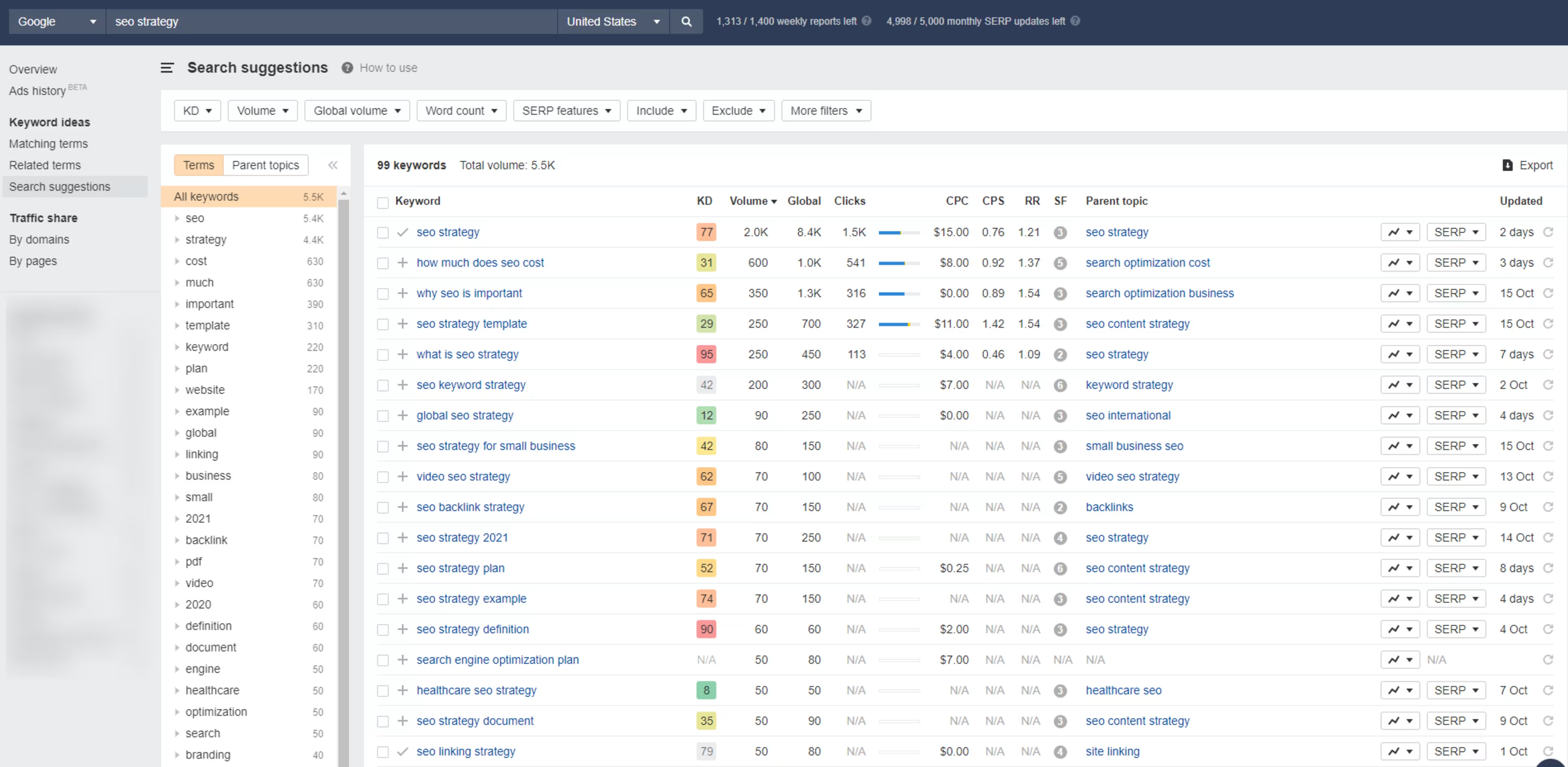
Screenshot from an Ahrefs Keyword Explorer search for “SEO Strategy” (Source)
Another important consideration while you’re conducting your keyword research is to consider the searcher’s intent when they were using that term, not just taking the collection of phrases in the keyword at face value. This will ensure that your efforts result in more users, leads, and sales.
What is search intent
Search intent (or “user intent”) is the why behind the user’s search query. For example, when a user types in “big apple,” are they searching for produce in their local grocery store? Or looking for more information on New York City for a book report?
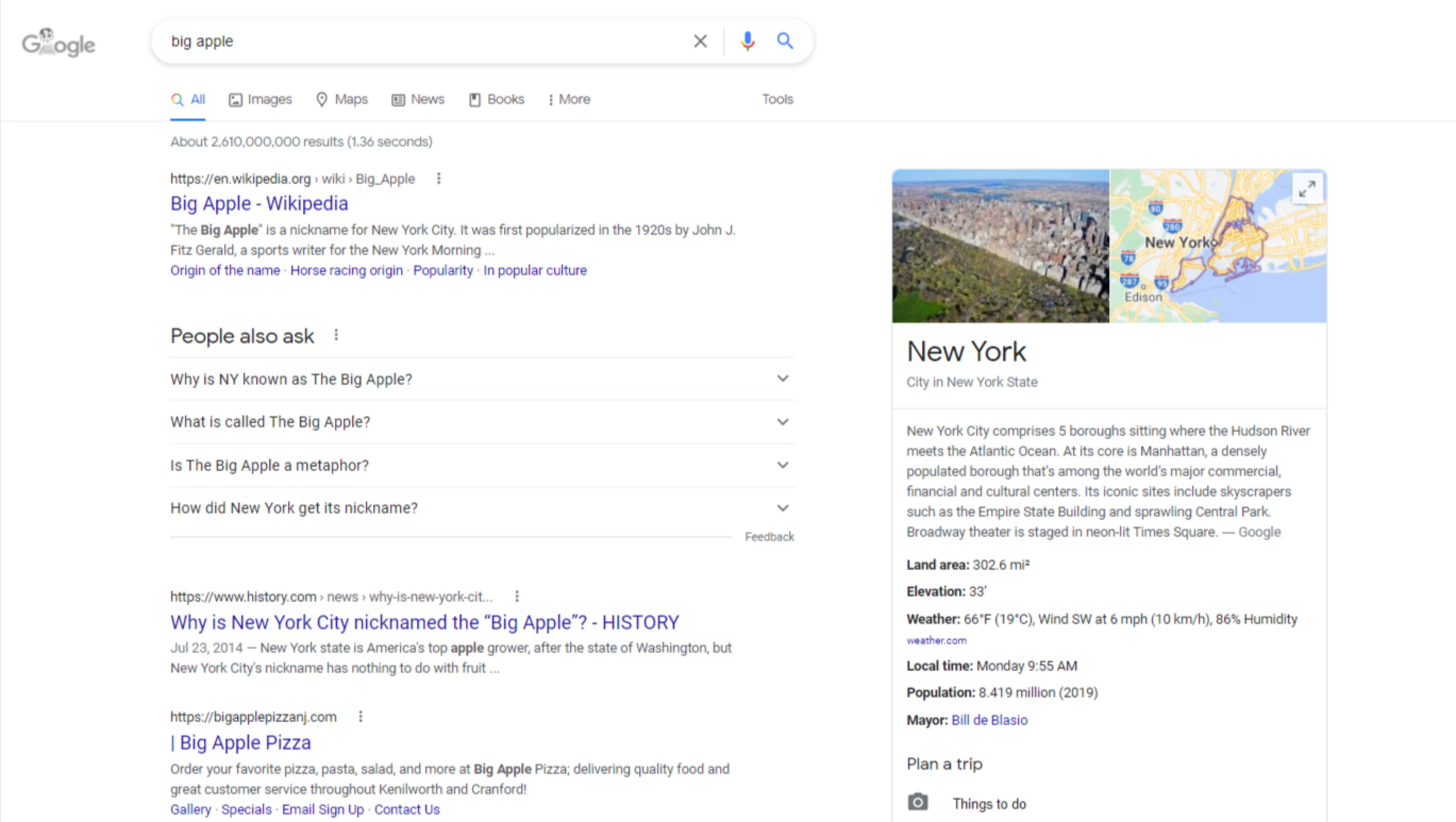
Search results page from Google (Source)
As you can see, knowing what a searcher is looking for purely from the phrases they use is not always black and white.
That’s why Google has spent so much time, money, and effort building complex algorithms to understand the nuances of these phrases, how they relate to each other, and engagement behavior once the user lands on a website to determine what kind of results to serve them.
The different types of search intent
To understand search intent, let’s look at the history of how it’s been defined. In 2002, a report came out that famously created the idea of search intent and its original classification. The author divided search intent into one of the following three categories: informational, navigational, and transactional.
Informational
An “informational” search query is one where the user is looking to learn something new.
Examples include:
What color is the White House?
How old was JFK when he got married?
How do you make your blog better?
Navigational
A “navigational” search query is one where the user is looking to go somewhere or find something they are already aware of.
Examples include:
Nike
YouTube
Paulie’s Pizza Palace
Transactional
A “transactional” search query is one where the user is looking to make a decision related to buying.
Men’s blue running shoes
Best SEO companies in Portland, Oregon
HR software pricing
How to determine search intent
Now that you know what search intent is and the different categories, let’s look at how you can determine search intent and map that to your target keyword choices.
Recognize common phrases
Some phrases are always going to indicate a specific search intent. Use this as an initial gauge to categorize queries within your keyword research process.
Common phrases for each include:
Informational: What, how, can, why, who, should
Navigational: [company name], [website name], [url]
Transactional: Price, cost, near me, vs., compare, best, buy
Examine the SERPs (search engine results pages)
One simple and effective way to see what the search intent for any given query might be is to look at what results Google is showing when you type it into the search bar. This is insightful because Google’s primary goal is to return the most helpful and relevant results possible to its users.
For instance, if you are a local shoe store and you want one of your product pages to rank for “best women’s shoes 2021,” you’re going to have an incredibly difficult time. Why? Well, to illustrate my point, here’s what came up when I performed the search:
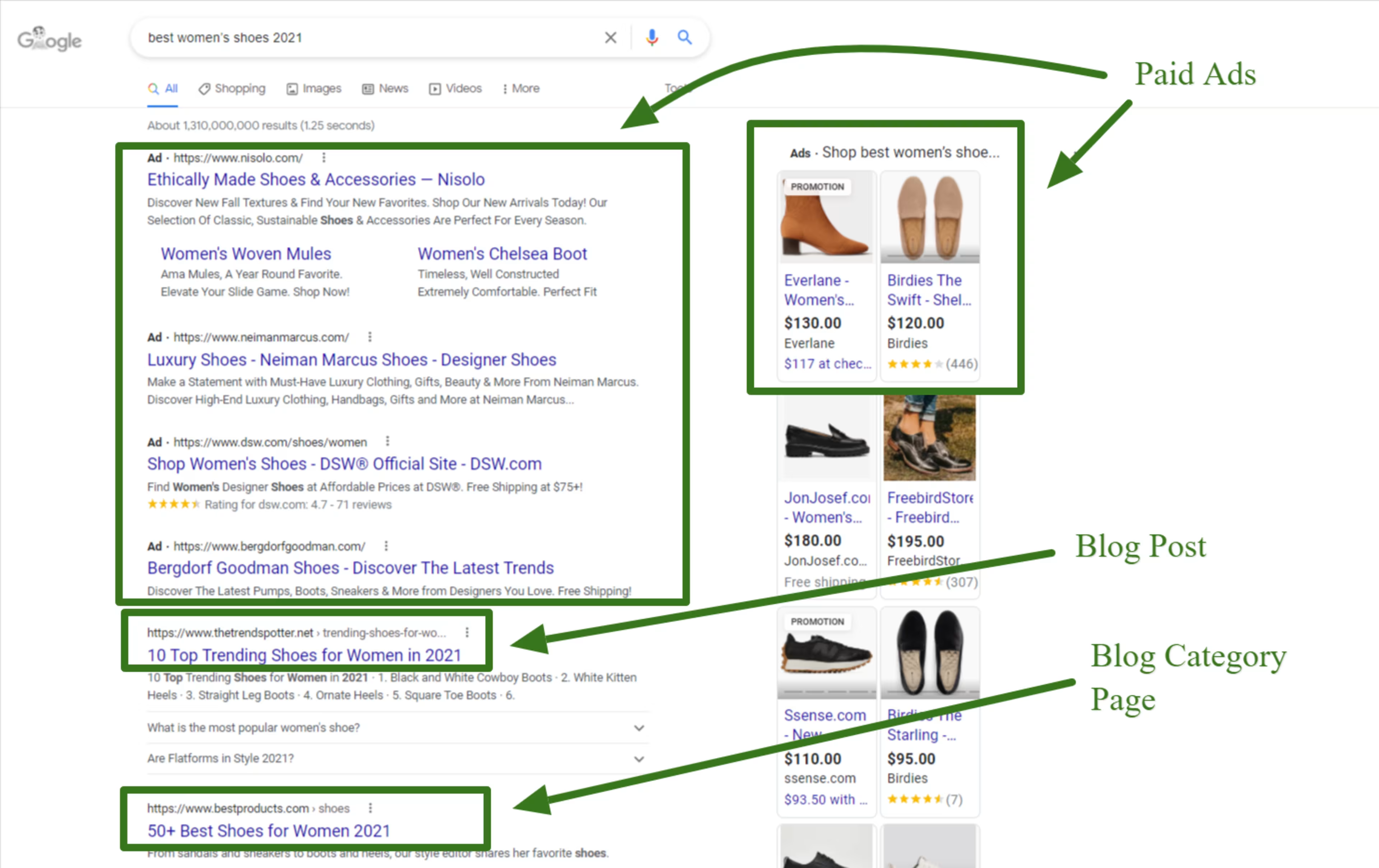
Search results page from Google, analyzed by the author (Source)
Blog posts or resources that list new, cool, and trendy products for the year, as well as advertisements from Google’s own platform. Not any one store’s product page for a specific shoe.
This is because the nature of the search term implies that the buyer is interested in comparing options to buy, versus trying to navigate towards any one solution.
Use SEO software to scale your keyword research
Recognizing common phrases and examining the SERPs are manual methods for identifying search intent. However, if you want to scale your keyword research beyond a few hundred keywords, consider investing in an SEO software.
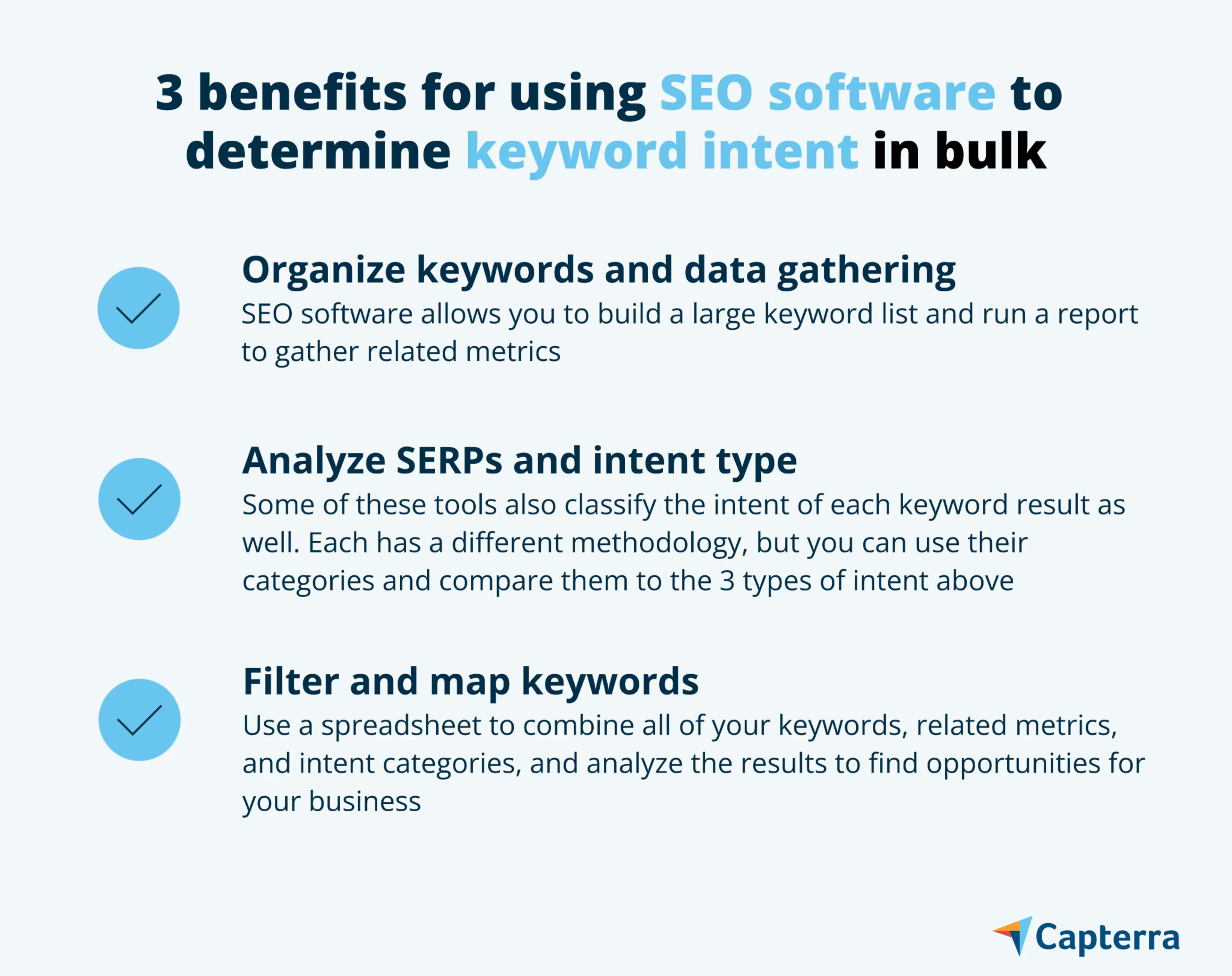
Each of these keywords should have metrics related to volume, ability to rank organically, search intent, if you currently rank for that term, cost per click, and even SERP features to inform your optimization strategy.
Your end goal should be to get a list of target keywords that you can use to inform content creation, content optimization, and technical implementations.
Thinking about hiring an SEO company for help optimizing your keywords? Browse our list of top SEO companies and learn more about their services in Capterra’s hiring guide.
Apply your research into your SEO and content strategy
Intent based keyword research doesn’t stop at finding the right keyword opportunities. That’s just the beginning of the process.
In order to reap the benefits of your analysis, you need to apply these keywords to your broader strategy.
Check out the key considerations for getting the most out of your research.
Inform your editorial strategy
Make writers aware of the search intent for every keyword used in your editorial calendar or content briefs. This will ensure they are more likely to satisfy the searcher’s needs.
You should also analyze your overall editorial strategy on a regular basis to make sure that you are addressing a variety of different search intents with the appropriate content so that you have a balanced and well rounded library of resources for searchers to find you.
Map the buyer’s journey
Similarly to understanding search intent, it’s important to identify how you will provide content and context to your users at every step of their buying journey.
It’s important to map your keywords to a specific stage of your target customer’s decision making journey based on their assumed needs.
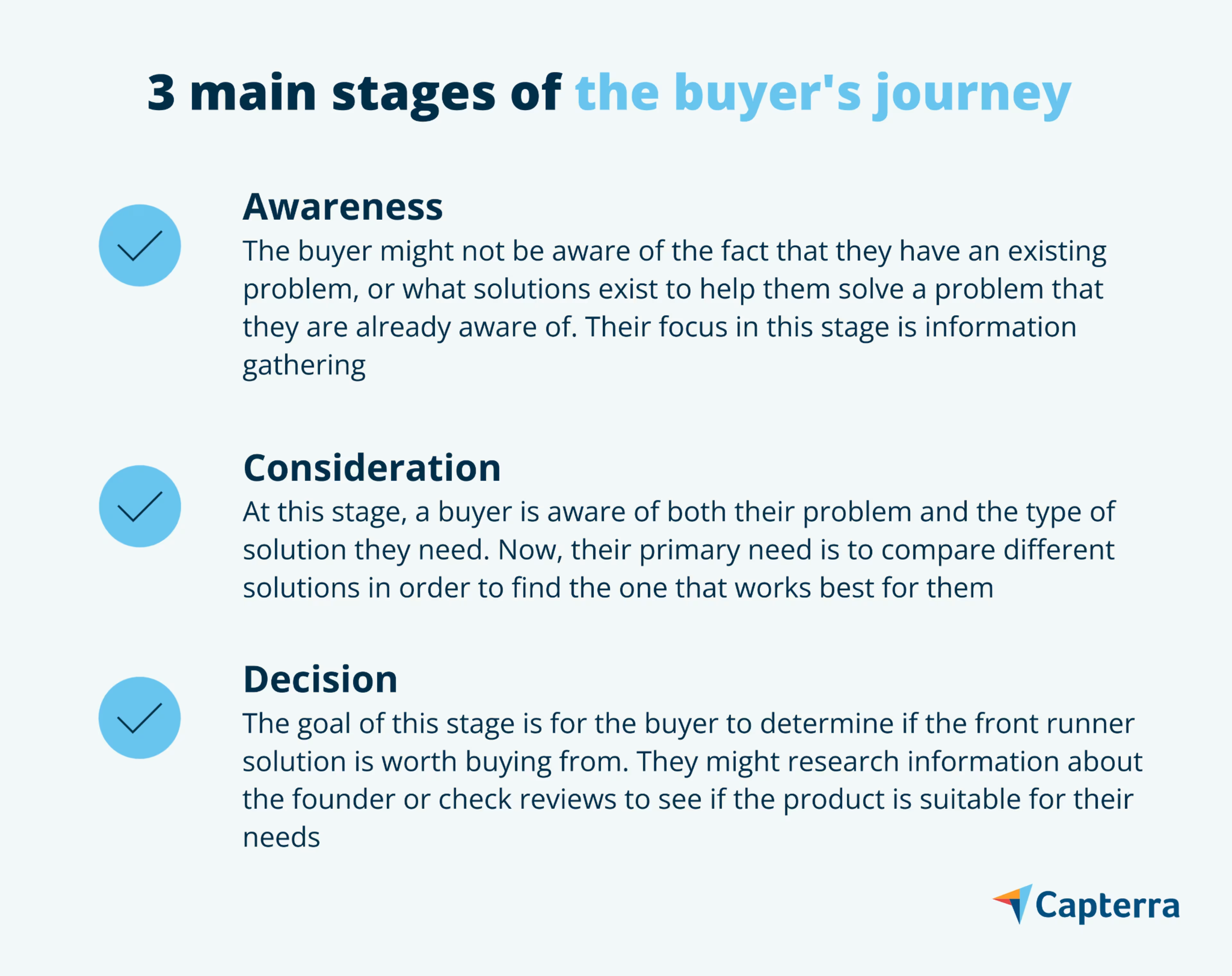
Align with site structure and UX design
Once you know the search intent behind their query, you can design an experience for them with that in mind once they land on the site.
As discussed above, if a searcher is looking for “Best Hiking Boots for Yosemite,” then it would be a complete mismatch for you to try and optimize your product page’s layout or content to rank for that term.
Instead, it would be wise to create a resource for them. One that includes:
Information about the different types of terrain and weather patterns most commonly found in Yosemite
A curated list of the best boots available, ranked in order from most useful to least useful
Images with a 360 degree view of each boot
Pricing and purchase links for each boot
Pros and cons of each boot
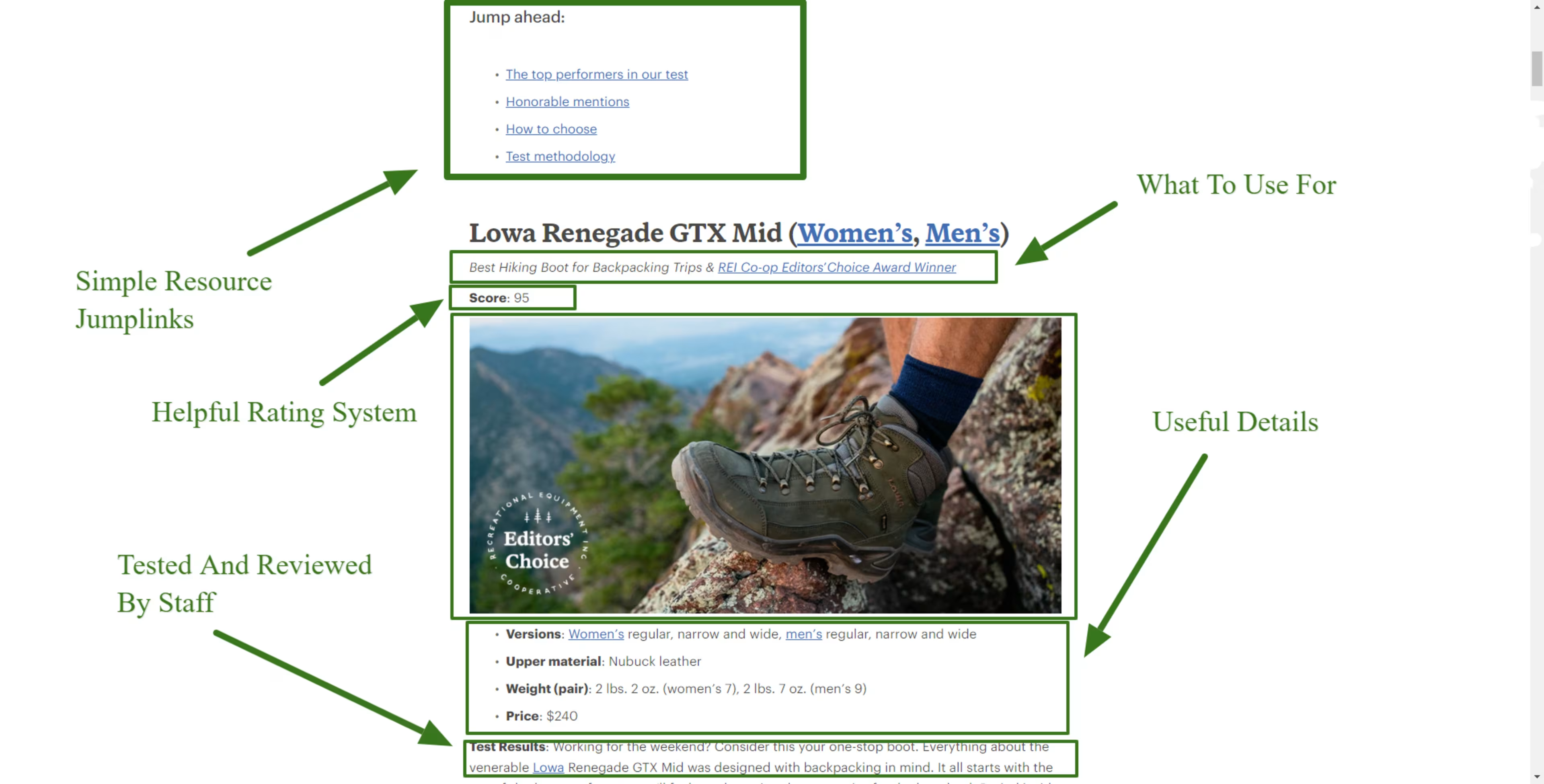
REI blog page, analyzed by the author (Source)
When thinking through the design of each page template and content types on your site, be sure to think through what kind of user is going to land here, from what source, and if they land on the page from a search, what are they in search of?
Go beyond keywords and embrace the searchers’ needs
Searchers and search engines are getting more sophisticated with each passing day.
It’s no longer enough to identify a few good keywords based on loose search volume, make a couple of on page optimizations, and expect to bring in new users and sales.
An effective approach to SEO these days requires careful consideration of the searchers' needs and creating content in tandem with an appropriate experience for them that helps them accomplish their goals.
Now go forth, do great research, and prosper.
Are you interested in becoming a guest writer for Capterra? Reach out to guestcontributors@gartner.com for details.